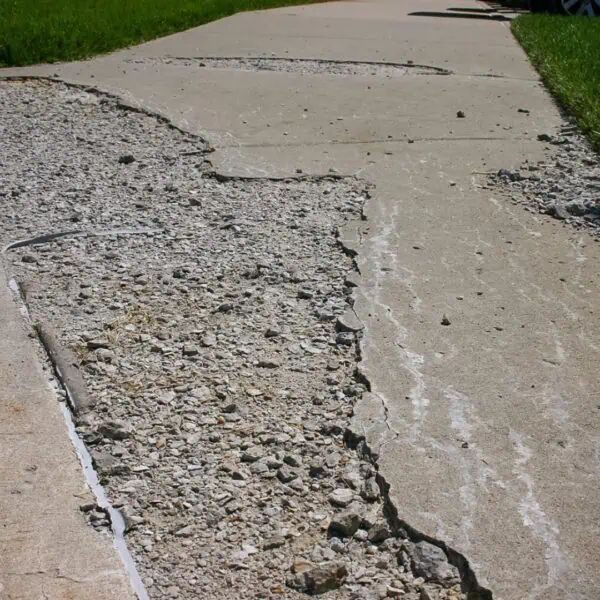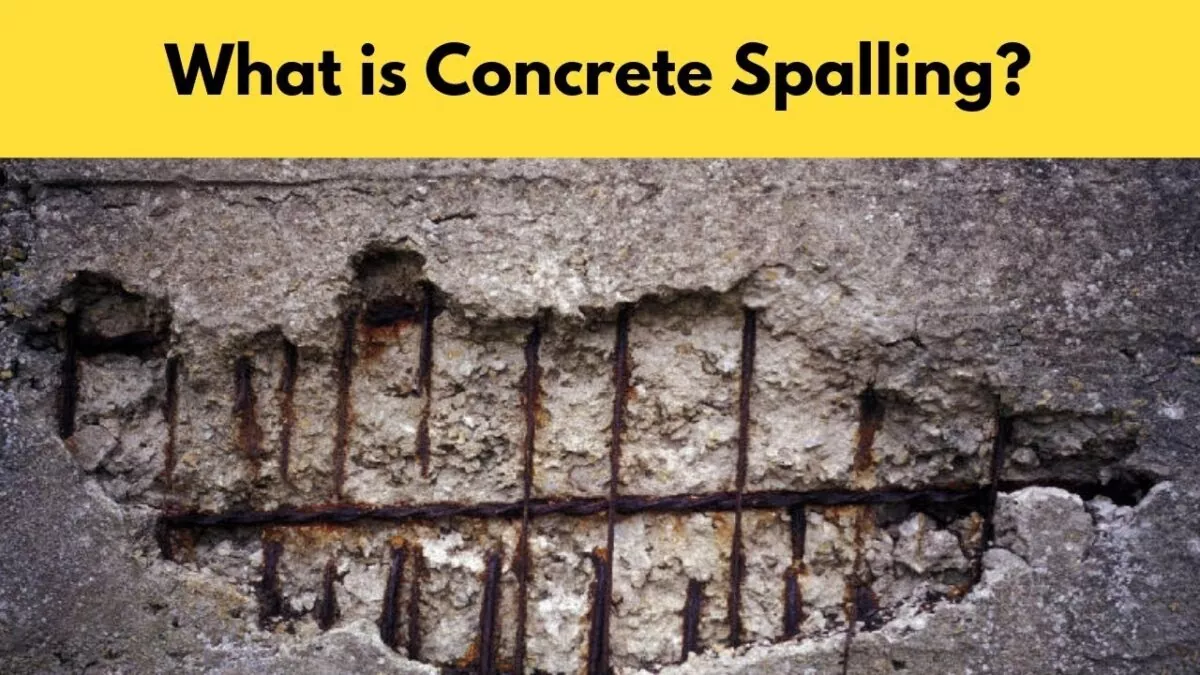What is Spalling Concrete and How To Repair It
In contrast to scaling, spalling concrete is a more profound surface defect, often appearing as circular or oval depressions on surfaces or elongated cavities along joints. Although smaller spalls also occur, the depth and diameter of spalls can be 1″ or more.
There are many causes of spalls, including pressure or expansion inside the concrete, bond failure in two-course constructions, impact loads, fire, and weathering. Two common causes of spalls are improperly constructed joints and corroded reinforcing steel.

The deterioration of asphalt pavement can be accelerated by spalls if left unrepaired. The minor spalls along joints in roads that do not exceed 3″ wide by 6″ long are often left unrepaired because they do not affect the ride of vehicles.
How to avoid concrete spalls?
There are several ways to avoid concrete spalls:
- Designing the concrete element – including joints – in accordance with the environment and anticipated usage
- Using the proper concrete mix and construction techniques
- When necessary, take special precautions.
Using concrete with a water-cement ratio of 0.4 or less is the first line of defense against steel corrosion caused by chloride-ion ingress from deicers. According to ACI 318, steel reinforcement must have adequate cover. A silica fume or latex concrete mix will be dramatically less permeable when exposed to extreme conditions. Here are some examples of measures you can take to reduce corrosion caused by chloride ions ingress:
- Astm D 3963 suggests the use of epoxy-coated steel reinforcing bars
- Sealing surfaces with breathable materials, such as silanes, siloxanes, and methacrylates
- The use of corrosion-inhibiting additives
- The use of cathodic protection methods.
To increase protection, it is possible to combine these methods.
Spalled Concrete Measures
Unless the pavement is damaged beyond the top 1/3, it is possible to repair a spalled concrete area. However, it is essential to note that steel reinforcement bars can be uncovered if more than 1/3 of the pavement has been damaged. It is necessary to do a full-depth repair if spalls are caused by a misaligned dowel bar or a D-crack.
Replacing the entire area may be more economical (and more uniform-looking) rather than partial-depth repair. A minimum depth of 1-1/2″ should be removed from the concrete. You can determine the repair area boundaries by sounding the pavement for delaminated or unsound areas.
There should be a 4-inch extension between a patch’s edge and an unstable area’s edge. We remove spalled and delaminated concrete using a saw, chipper, or mill. Jackhammers should be small—no more than 30 pounds to prevent concrete damage beyond the repair area. An ideal patch would be rectangular or square with vertical edges at the edges to contain it. The exposed concrete should be lightly shot-blasted to ensure a proper bond with the repair material.

spalls repair
Various materials are available for patching, including Portland cement-based material, rapid-strength proprietary material, and polymer concrete (epoxy, methyl methacrylate, and polyurethane).
Bituminous materials have also been used, but they are usually a temporary solution. Thermal expansion coefficients of patch materials should be compatible with those of the concrete underneath. Bonding agents are sometimes required for certain materials, while others need only a clean surface.
Small amounts of patch materials are usually mixed to ensure immediate placement (without segregation), consolidation, finishing, and curing. The air temperature at the time of placement must be above 40°F for all cement-based patches and many proprietary rapid-setting mixes. While polymers can be applied at lower temperatures and on wet substrates, they perform better when placed under more favorable conditions.
A wet curing method (spraying, wet coverings) reduces patch shrinkage more than a sealed curing method (sheet materials, curing compounds).
Joints involved in a spall repair must be restored to proper working conditions to allow thermal expansion of the slab. For partial-depth repairs to be successful, this is an essential step. It prevents non-compressible materials from entering joints and allows them to move freely.
For more information on patching materials and placement methods, consult the manufacturer.
